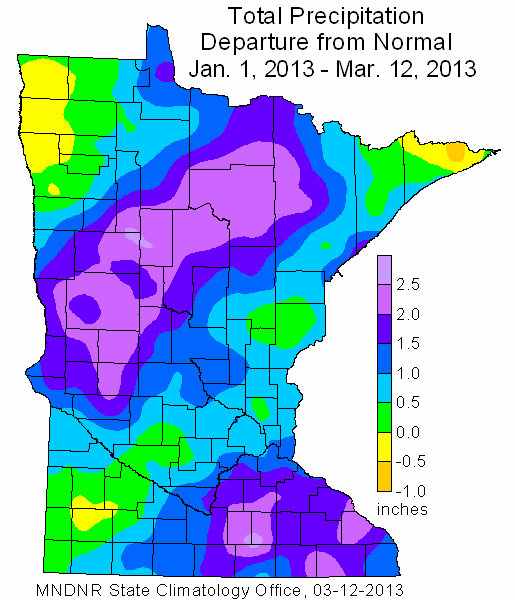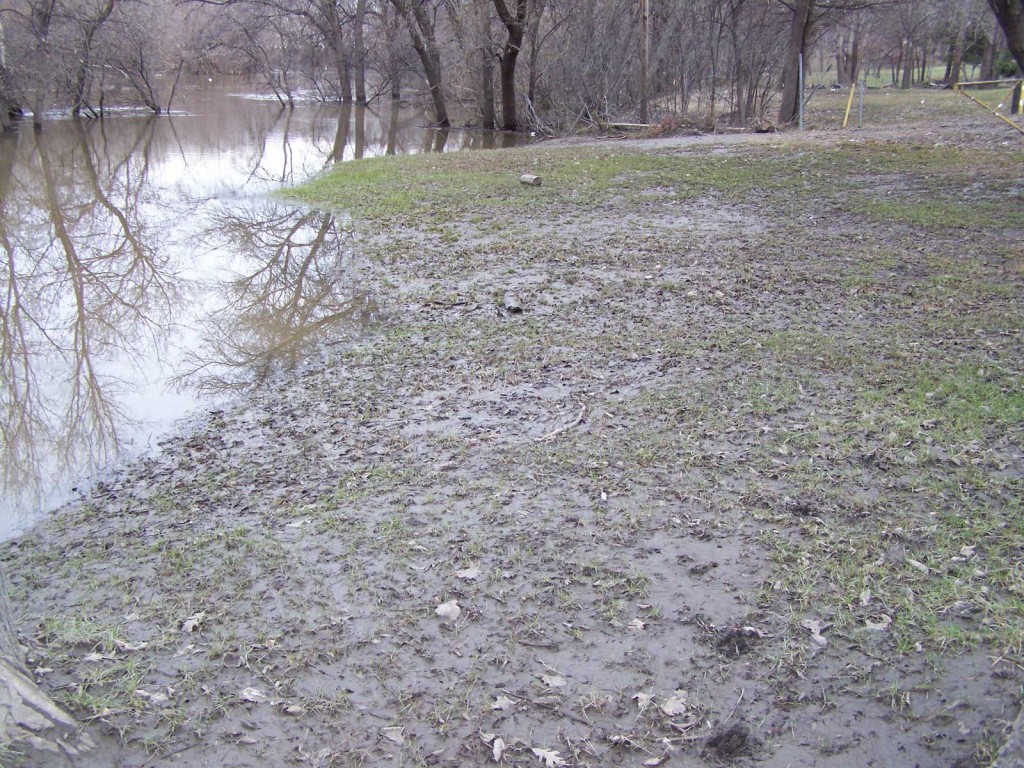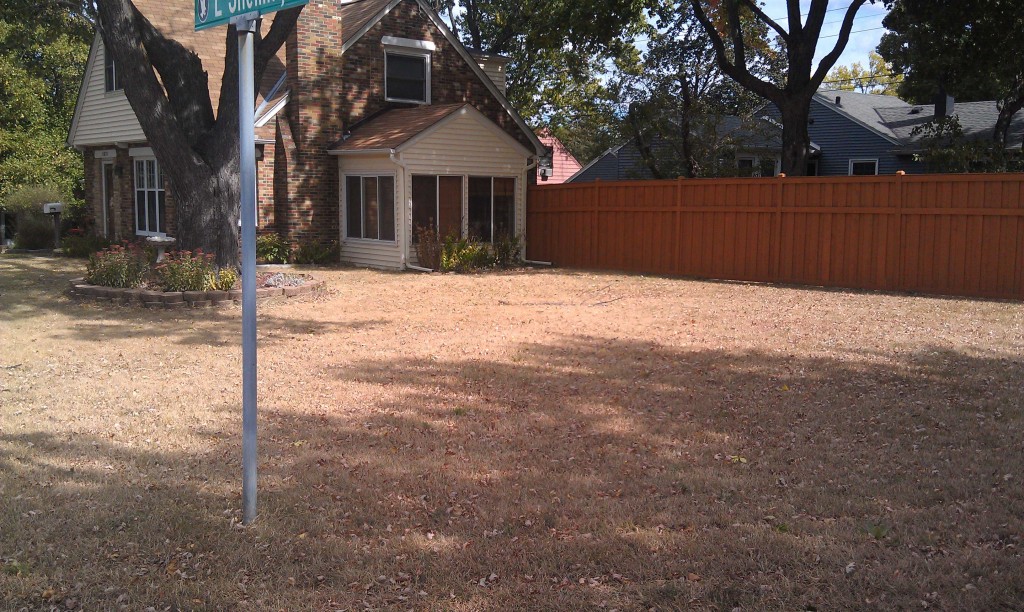By Sam Bauer
Are you ready for spring or still enjoying the winter? Either way, it’s time to start thinking about home lawn care again. Last fall we were stressing the importance of maintaining moisture levels in your lawn amidst one of the worst droughts in Minnesota’s history. In case you’ve forgotten, the months of August through November alone saw an eight inch precipitation deficit in the Twin Cities area. This translates to approximately 70% below average precipitation for the fall period. Many other areas of the state, mainly northwestern and southern Minnesota, were in a much worse situation.
Web link: http://climate.umn.edu/doc/journal/drought_2013.htm
Currently, 70 percent of Minnesota is in Extreme Drought or Severe Drought according to the University of Minnesota Climatology Working Group (Spoden, 2013). Fortunately, total precipitation for 2013 is so far above average. The climatology map on the left shows precipitation departures from normal for the first of the year until now. The northwest region of the state has received as much as 2 inches of precipitation above normal. Question: will this help to replenish soil moisture levels? The simple answer is, well, not exactly.
Right now, soils are frozen. Soil frost depths range from 0 up to 60 inches in Minnesota soils, and this takes time to thaw out in the spring. This generally means that precipitation falling right now (frozen soil) does not get absorbed into the soil (or rootzone), but rather promotes the flooding that we experience every spring. Even during slow spring thaws, the surface moisture melt will precede the defrosting of our soils, in which case most of the surface moisture will run off. This means there is potential for spring flooding AND continuation of drought conditions. Depending on your location in the state, you may need to consider preparing for flood or drought, possibly both.
Flooded Lawns
Last spring we saw flooded lawns in many areas of the state. Additionally, the floods near Duluth in June left many homeowners with silt covered turfgrass in need of repair. If your home is in close proximity to any body of water, especially some of our main rivers like the Mississippi or the Minnesota, this may be nothing new to you. However, it’s always good to be prepared for worse case scenario situations.
A spring flooded lawn covered in silt and debris. Remedies for this situation would include removing the silt and debris, aerating, and interseeding. Photo: Randy Nelson
Consider these tips to help reduce the damage and recover from flooding:
- Sandbag high risk turf areas to reduce the extent of flooding and buildup of silt
- Remove all debris and silt from smothered turf areas as soon as possible
- Smothered turf should be aerated to allow the exchange of oxygen and encourage new growth
- Avoid planting perennial ryegrass, as it is generally less tolerant of flooding than other turfgrass species.
- Consider completely renovating lawns that are not easily repaired
For more information on repairing spring flooded lawns, please see this Yard and Garden News Update from retired Extension Turfgrass Educator Bob Mugaas:
http://blog.lib.umn.edu/efans/ygnews/2010/04/repairing-spring-flooded-lawns-1.html
Drought Stressed Lawns
A lawn left to go dormant (possibly worse) last fall. Photo: Sam Bauer
It seems odd to be discussing both flooded and drought stressed lawns in the same article, but really this is the situation that we are potentially facing this spring. Those of you that maintained sufficient soil moisture levels through supplemental irrigation last fall will be in a much better situation than those that chose to not water. In many cases, even the slightest effort to provide your turfgrass with some moisture can pay big dividends. We also discussed dormant seeding last fall, which can be great practice to improve the quality of your lawn the following spring. If you failed to irrigate and/or dormant seed, unfortunately you might have a lot of work to do this spring.
Proper irrigation practices will be critical to promote a healthy lawn this spring. Consider these irrigation tips for drought stressed lawns:
- Irrigate during the early morning hours to reduce the leaf wetness period which is prolonged by night watering. Avoid daytime irrigation, which has the potential to evaporate quickly and be blown off target
- Water the SOIL, not the canopy
- Monitor daily soil moisture loss through evapotranspiration and replace only what is lost. Follow this link for evapotranspiration values in your location: http://www.soils.wisc.edu/uwex_agwx/sun_water/et_wimn
- Make seasonal adjustments to your irrigation system or watering schedule based on rainfall and temperature. In general, spring and fall watering should be heavy and infrequent, and summer watering should be light and frequent
- Measure the depth of water put out by your irrigation system or sprinkler over a certain time period. This will be important in determining how long to run your irrigation cycle
For more information on proper irrigation practices, please follow these links:
Home irrigation systems: Is your home irrigation system up to par?
Lawn watering practices: http://blog.lib.umn.edu/efans/ygnews/2011/05/post-12.html
Watering lawns and turf: http://www1.extension.umn.edu/garden/yard-garden/lawns/#watering
As always, call or email with questions: [email protected] or 763-767-3518
REFERENCES
Spoden, Greg. 2013. Drought Conditions: Update March 7, 2013. Minnesota Climatology Working Group. Online resource: http://climate.umn.edu/doc/journal/drought_2013.html


